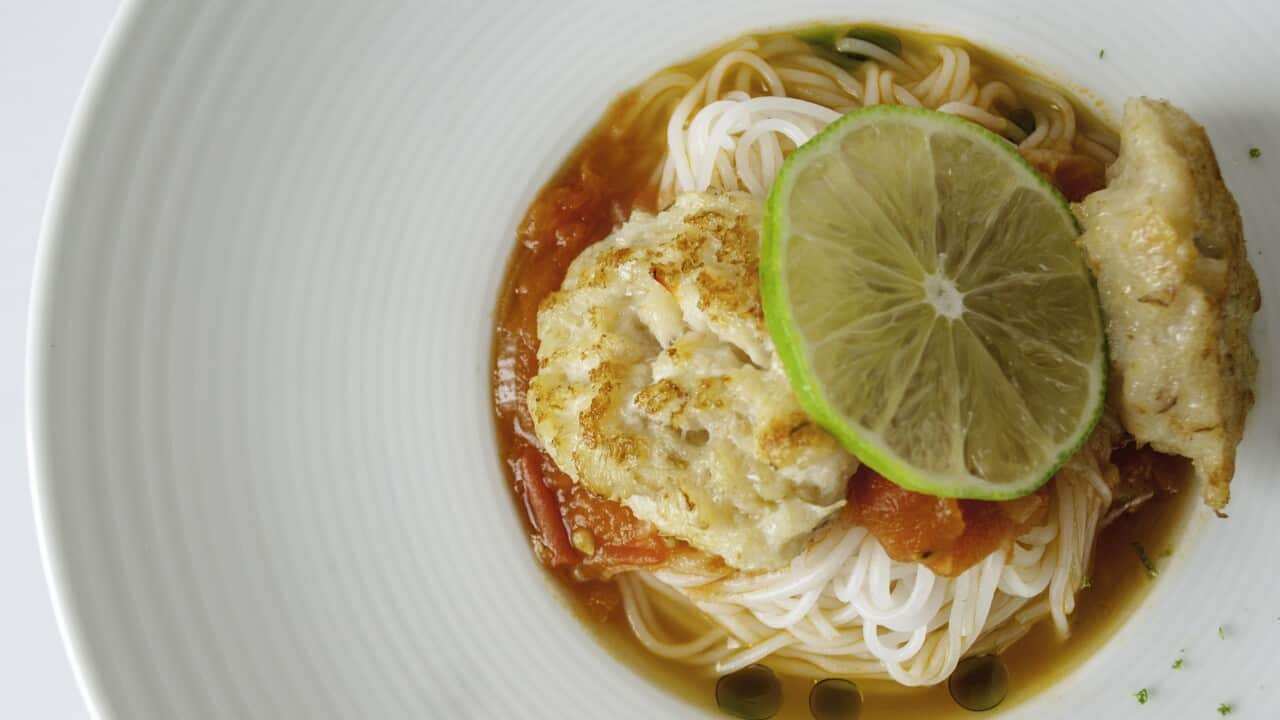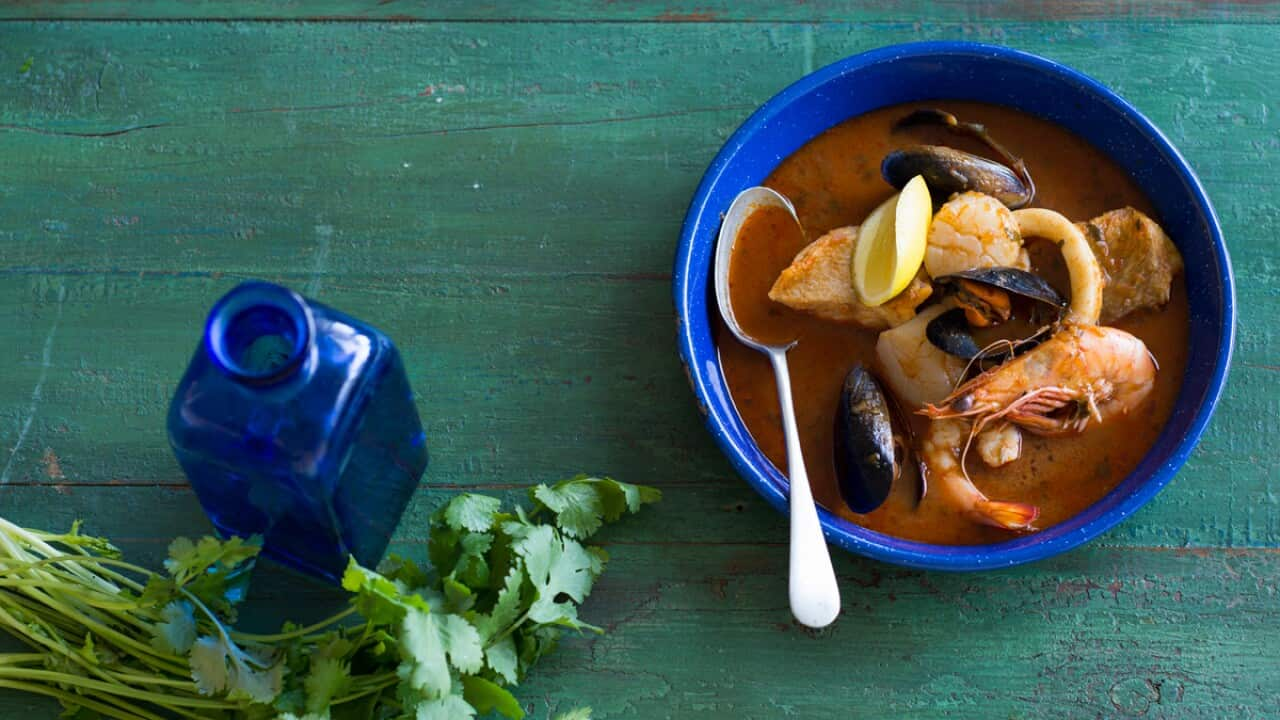He's , serves only fish at his Paddington restaurant , authored a book called and has recently added his voice to the (MSC)'s fight for more sustainable seafood choices. It's fair to say that Josh Niland loves everything about fish.
"How we source and handle seafood now will have an impact on what’s available in Australia for generations to come," Niland says.
He is committed to using the entire fish in his cooking - even though he knows that fish eyeballs and intestines are likely to make a few quite squeamish.
"At the end of the day, fish is bloody expensive." - Josh Niland
Fish out of the bin
"At the end of the day, fish is bloody expensive," Niland . "We need to have these methods of cookery up our sleeves so we’re not putting fish in the bin, basically.”
When sustainability, waste and the impact of climate change on our oceans are such hot topics, Niland's commitment feels like one everyone should be making. Plus he makes it all seem so easy.
"With us buying such beautiful fish and having such great ways to store fish, we’re able to use the offal and come up with ways in a western sense to make them delicious and interesting,” Niland said.
Leaping the squeamish hurdle
Of course, getting over the "ick-factor" and cooking the eyeballs are both big hurdles for many.
"I think there’s a lack of knowledge surrounding how to cook, eat and utilise all the parts of a fish," says Niland's MSC co-supporter, Tasmanian chef and forager, Analiese Gregory. "It can seem daunting and difficult." Gregory recommends starting with more approachable parts of the fish. "I think, to begin with, things like grilled fish wings, collars and heads are gelatinous, delicious and perhaps easier to approach than a spleen or a liver!" she says.
Gregory recommends starting with more approachable parts of the fish. "I think, to begin with, things like grilled fish wings, collars and heads are gelatinous, delicious and perhaps easier to approach than a spleen or a liver!" she says.

Analiese Gregory wants to highlight sustainable fisheries and get people using them. Source: Adam Gibson Photography
Or take things slow and start with something extra-tame. Like fish stock.
Well stocked

A clear fish stock like this one makes a good as a base for soup or gentle liquor for poaching fish. Source: Sharyn Cairns
Once you've enjoyed a whole fish meal like , or , save the head, frame and wings to . It's as simple as throwing the lot in with some vegetables and herbs and simmering the lot for a couple of hours. You then gently strain and discard the bones - voila. Minimal fish contact, but an excellent introduction to fin-to-tail resourcefulness.
Crunch on through
Of course, the easiest way to consume the entire fish is to choose fish with edible bones. That way you can just munch your way through and feel very virtuous while you do so. Fish with edible bones (and heads, when you're ready), include sardines, anchovies, whitebait and smelt.
In Japan, fresh sardine bones are rolled in a little flour, then deep fried and served as 'fish crackers'.
In Japan, fresh sardine bones are rolled in a little flour, then deep-fried and served as 'fish crackers'. They're a popular treat in sushi restaurants.
In Spain, whitebait and other small fish is deep-fried until crispy then served simply with salt and lemon and eaten as part of tapas. Italians enjoy baby cod in much the same way.
Or do as Niland does and use the spine of the fish as a skewer.
Prawns are also often eaten whole - in Vietnam keeping the prawn intact and frying the head, shell and legs bring a crispy texture to dishes. According to Science Daily, consuming a chemical called chitosan in prawn shells has even been .
READ MORE

Salt and pepper tiger prawns
Sauce smother
If crunching into a tiny little fish feels like a step too far, you can always try hiding the fish bits in the sauce. is a classic Malaysian and Singaporean family favourite. Fish heads bring a real depth of flavour that the flesh just doesn't have, plus they contain a surprising amount of meat. Once you make a fish head curry, you'll be reluctant to let future fish heads go to waste. "I really enjoy cooking fish whole on the bone at home, such as Flathead or flounder," says Gregory. "Then I make a sauce like a café de Paris or a and miso base and pour it over. It’s a fun activity to sit there eating the fish cheeks and really getting into it."
"I really enjoy cooking fish whole on the bone at home, such as Flathead or flounder," says Gregory. "Then I make a sauce like a café de Paris or a and miso base and pour it over. It’s a fun activity to sit there eating the fish cheeks and really getting into it."

The eyes in a fish head curry are saved for the most important person at the table. Source: Sharyn Cairns
Dip into it
Another way to ease yourself into fin-to-tail philosophy is to use fish scraps to make dips, soups and sauces. for the table, then scrape flesh from the bones and head to use in these or recipes.
You could even try making a version of using leftover prawns, clams or fish in place of the dried shrimp and scallops. Experiment to come up with your own flavours, just don't leave your fish to go to waste. Find this XO sauce recipe .
Find this XO sauce recipe .

Adam Liaw's family's XO sauce can be modified using your seafood scraps. Source: Destination Flavour China
Experiment to come up with your own flavours, just don't leave your fish to go to waste.
However you choose to go about your fin-to-tail experimenting, it's important to simply start. Next time you find yourself with 'leftovers' after making dinner, have a think about what you can create, not waste. Make it your mission to use the whole fish and your health and conscience will be rewarded.
Sustainable eating

Crab noodle soup












